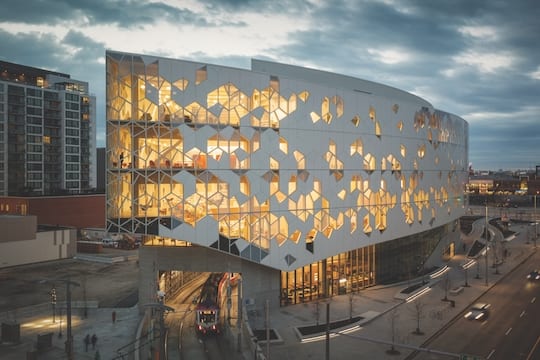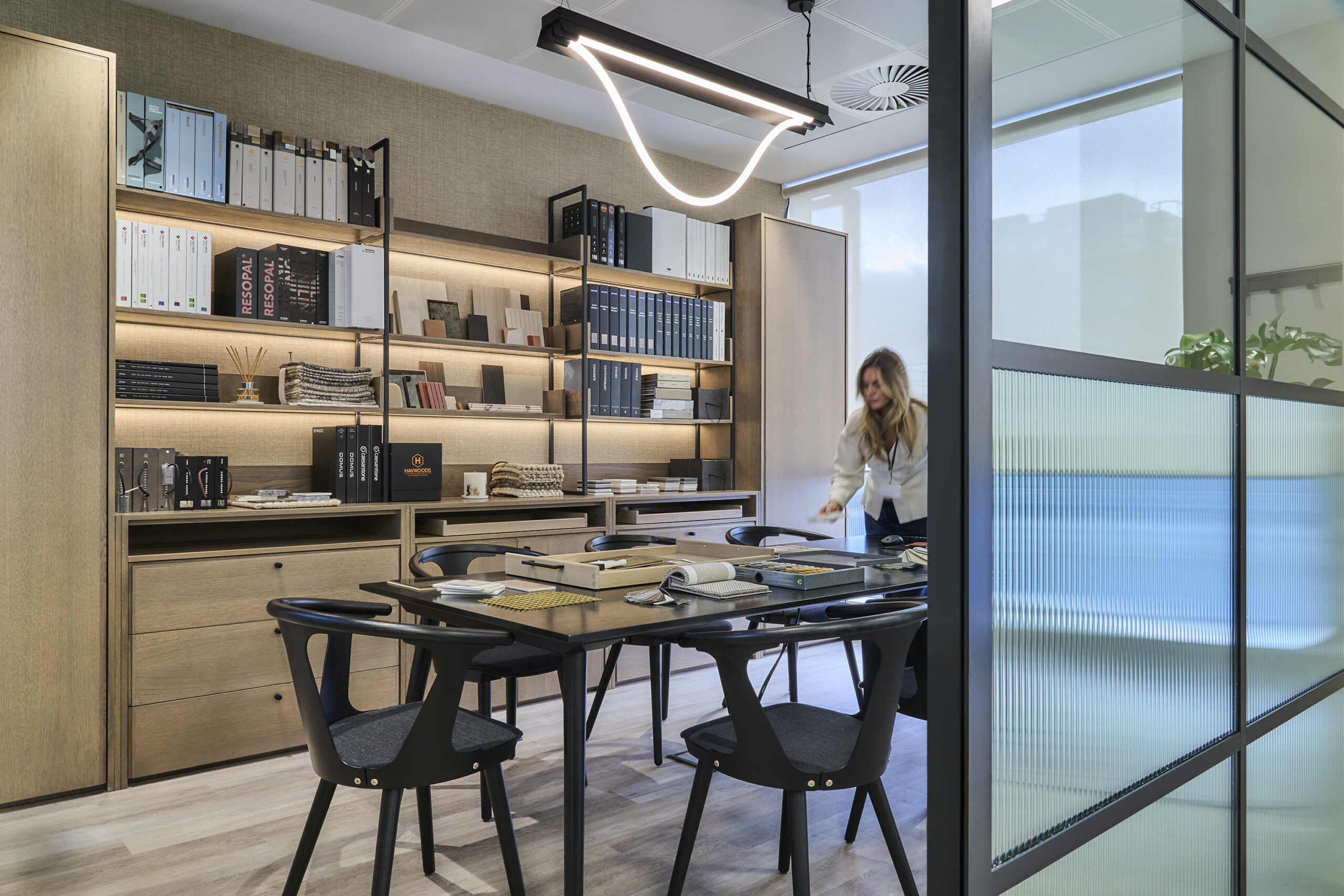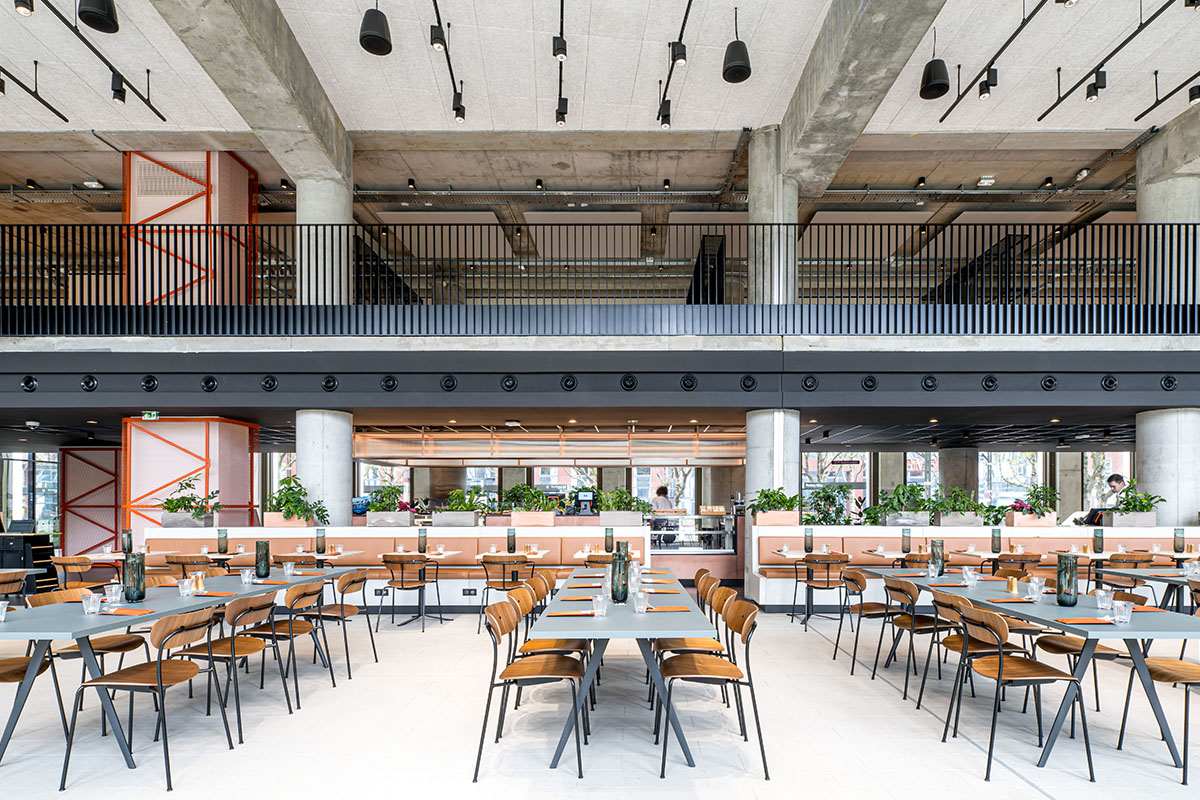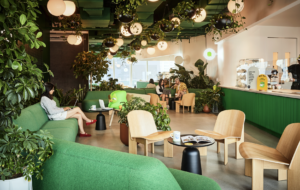 Michael Grimm
Michael Grimm
On 1 November last year, when the new Calgary Central Library opened, hundreds of people lined up to see their new cultural institution.
A couple of days later, social media exposure and free weekend rides on the city’s CTrain encouraged 52,223 people to visit the library – some probably for the second time. According to the library, it added 3,397 members that weekend alone. This is not just a public library, it is the public’s library.
After ten years of planning, two years of construction and $245m CAD (just under £144.3m), the latest addition to Calgary’s cultural renaissance is inspiring. Designed by Snøhetta and Dialog, it is a good example of designers working in good faith with the community.
 Open stairs give sightlines across the six-storey building Photo: Michael Grimm
Open stairs give sightlines across the six-storey building Photo: Michael Grimm
Calgary Public Library is one of North America’s largest library systems, with over half of residents of the Canadian city as active cardholders. Over 16,000 Calgarians participated in public consultations for the new building going back as far as 2004. Building a library with perfunctory public consultations would have been unacceptable.
The six-storey, 22,300sq m building is a place for youthful engagement, community interaction, professional development, and entrepreneurial incubation. There are over 600,000 items, including books, magazines and multimedia resources.
Users can find spaces for community and Indigenous art exhibitions, drama productions, public lectures, co-working spaces, courses and even a space to play video games.
On the neighbourhood level, the library adds even more life to the city’s East Village. Ten years ago, it was lifeless during the day and unsafe at night. Since then, it has developed into a desirable neighbourhood, with other new cultural institutions, such as Studio Bell, Glenbow Museum, and the Arts Commons.
Prior to the construction of the library, the site was mainly known as the junction where the CTrains running on Seventh Avenue would split, with the blue line to the north-east quadrant of Calgary and the red line to the south east.
Now the tracks act as a saddle that the Central Library straddles, allowing the red line trains to sneak off through its base before descending underground.
The hull-form building permits the viewer from the street to see far into the building and its interior activities. The more amusing activities, such as the children’s section, cafe and performance hall, are on the lower levels, whereas the more erudite user can find quietness on the upper levels.
This expression of vitality is the characteristic of 21st century museums. No longer stodgy mausoleums for books, they are places of cultural energy.
 Bookcases line the walls with research areas at the centre Photo: Michael Grimm
Bookcases line the walls with research areas at the centre Photo: Michael Grimm
“The building provides spaces for all types of people and activities – for social interaction and exchange, for studying and learning, for quiet and introspection,” explains Craig Dykers, founding partner of Snøhetta. “It’s an unusual space, but it’s also friendly.”
The hexagonal patterns of the facade, with their solid, opaque, and transparent sections, give the building an élan. Too many cultural projects of this scale default to the modern clarity of floor-to-ceiling fenestration.
Instead, the architects added a layer of meaning to the facade that goes beyond the contemporary desire for transparency in architecture.
The main entrance is wide, with a series of steps that make it inviting, especially from Eighth Avenue to the east, where even some of the crosswalks have been patterned after the facade. This East Terrace is also a place for social gathering, under the golden hue of an archway made from British Columbian red cedar wood.
Once inside, the library’s form makes its separate areas appear closer than expected, and turns the geometric centre of the building into a point of spatial emphasis. The whole building feels elliptical, similar to one large room where sections flow into each other.
There are no intimidating canyons of books, so staff do not need ladders. Most bookcases are kept to between three and five shelves, maximising natural light throughout the library, making it safer for minors, and more accessible for people with mobility issues.
 Warm wood finishes have been used throughout Photo: Michael Grimm
Warm wood finishes have been used throughout Photo: Michael Grimm
“We wanted to make a library that was absolutely intuitive, one where you could understand its entire organisation as soon as you walked in the door,” explains Dykers.
“The rawness and warmth of the materials are supposed to give people the sense that the library is a space that is meant to be engaged with, not just a place to store books.”
Calgarians have made their point: they care deeply about culture and their status as a cultural hub. The Central Library, the largest public investment in the city since the 1988 Winter Olympics, is one more proof of that commitment.
The project is not just about investing in community, but about Calgary’s transformation from a resource-based economy to a creative centre.
With each new institution, Calgary hopes that it can create a new image for itself.
More than ten years in the planning, Snohetta’s new library for Calgary is already bringing a fresh cultural energy to the city



















